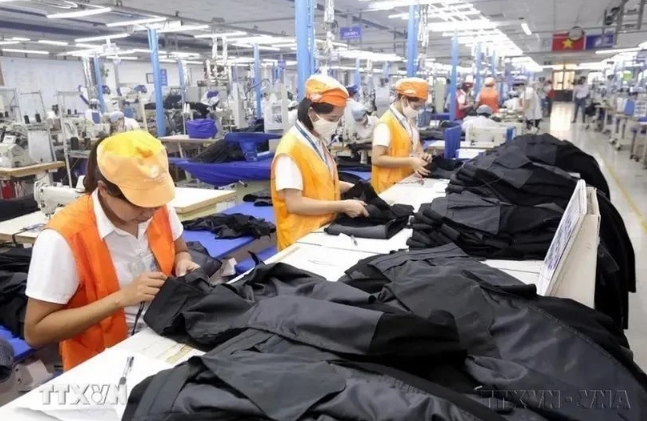Businesses advised to leverage new growth of Vietnam’s garment-textile sector
Society – Economy - Ngày đăng : 10:36, 21/09/2024

The Vietnam Textile and Apparel Association (VITAS) reported that the sector’s export revenue in August was estimated at nearly US$4.3 billion, raising the figure in the first eight months of this year to US$28.3 billion, up 6.2% year on year.
VITAS Chairman Vu Duc Giang attributed the increase to the shift of orders from other countries to Vietnam amidst the US-China trade war, military conflicts in Europe, and the latest uncertainty in Bangladesh – a major apparel exporter. He also noted that the figures indicate an opportunity for the industry to set a new export record this year.
Giang said the sector’s long-term strategy is to diversify products to satisfy various customer segments, and to expand export markets.
He also pointed to challenges to the industry, saying rising orders and new partners require businesses to make greater efforts to meet new purchasing strategies.
The VITAS Chairman stressed the need to step up chain connectivity, from material and machinery to marketing, and to optimise technologies and artificial intelligence to improve productivity and quality, and create product uniqueness.
If the sector shows strong performance in increasing market share for Vietnamese textile and garment in the international market, this will create momentum for further long-term development, Giang emphasised.
Nguyen Van Hoang, General Director of Dong Tien JSC, held that the shift is also taking place right in the domestic market as partners are turning to factories that meet environmental, social, and governance (ESG) standards.
Jimmy Qiu, Vice President of Jack Technology, which provides solutions for smart manufacturing of clothing, said at a workshop held in Ho Chi Minh City late August that Vietnam’s textile-garment is developing rapidly and holds an increasingly important position in the global chain.
Vietnam has won over importers thanks to its quick adaptation to smart technologies and green production, he added.
According to Pham Van Viet, Chairman of the Board of Viet Thang Jean Co., Ltd. (VitaJean) and Vice President of the Ho Chi Minh City Association of Garments, Textiles, Embroidery and Knitting (Agtek), price competition is no longer the target, and abundant, low-cost workforce no longer Vietnam’s advantage.
It is now a must for the sector to optimise science-technology and digital transformation, and devise directions and policies to ensure a harmonious transition to the new market, he said.
According to Viet, in order to build a domestic garment-textile supply chain, businesses should utilise high-tech systems in all stages from raw material production, weaving, designing, and sewing to branding.
However, as this process requires great capital and human resources, the sector needs to support businesses, especially small- and medium-sized ones, in green transition, technology renovation and human resources training in designing.
At the same time, it also needs to further promote communication effects, thus building trademark for enterprises and national textile sector.
